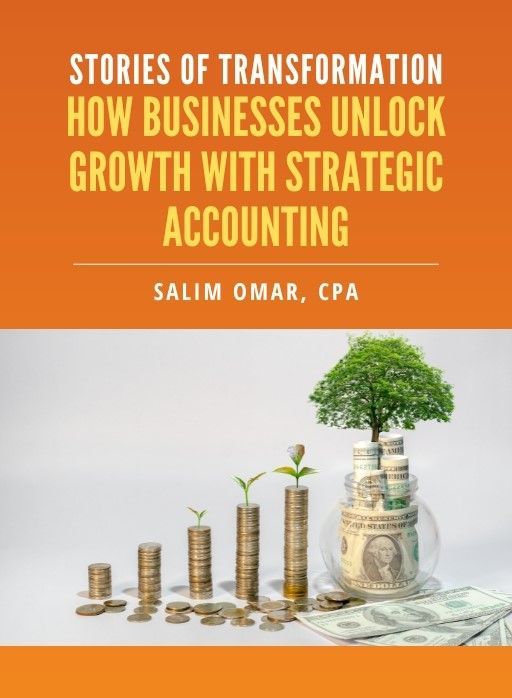Scenario Planning for Q4: Build Base/Stretch/Downside Models That Drive Action
Q4 isn’t just the last quarter—it’s the final sprint where businesses either finish strong or scramble at the finish line. Seasonal spikes, year-end contracts, and last-minute client spend can either fuel a revenue surge or trip you up if you’re unprepared. That’s where scenario planning steps in a simple, practical way to turn uncertainty into clear, actionable steps.
Straight Talk CPAs has helped countless companies navigate Q4’s twists and turns. Their secret? Base, stretch, and downside models that don’t just forecast—they guide decisions and spark action.
Step 1: Build Your Base Case
The base case is your “realistic expectations” model. Think of it as your Q4 anchor—it’s neither overly optimistic nor pessimistic, just what’s likely to happen if current trends continue.
Focus on:
- Revenue: Look at year-to-date numbers, seasonal trends, and signed contracts.
- Expenses: Include fixed and variable costs, plus anticipated year-end outflows like bonuses or supplier payments.
- Cash Flow: Map inflows and outflows so you can spot any crunches before they happen.
A B2B services client projected $500,000 in Q4 revenue using their base model. By treating this as a baseline, they could measure performance against other scenarios and adjust early instead of scrambling at the last minute.
Step 2: Stretch for Opportunity
The stretch case is your “what if everything clicks” scenario. It’s the upside-down playground—but grounded in reality. Stretch models help you spot opportunities and make bold moves without flying blind.
Key areas:
- Sales Boosts: Could a targeted campaign or referral push accelerate revenue?
- Client Demand: Any pending proposals that could close faster?
- Operational Capacity: Do you have the team and tools to handle a spike?
One eCommerce client modeled a $200,000 upside in their stretch case. By moving funds from underperforming ad channels into a targeted email campaign, they captured $180,000 in extra revenue—turning “what if” into “what happened.”
Step 3: Downside Planning to Avoid Surprises
The downside case is your “oops, what if it all goes sideways?” plan. It identifies risks before they turn into crises. Modeling these scenarios lets you act early instead of reacting under pressure.
Consider:
- Late Payments: Some clients historically pay slowly around holidays—plan for it.
- Unexpected Costs: Supply chain delays, staffing gaps, or equipment hiccups.
- Revenue Shortfalls: Lost deals or lower demand could impact your forecast.
A tech client spotted a potential $80,000 shortfall in early December using their downside model. By securing a short-term line of credit in September, they avoided late payments and kept operations smooth during peak season.
Step 4: Link Models to Action
Scenario planning works only if you take action. Each model should trigger clear strategies:
- Base Case →
Monitor weekly, tweak as trends emerge.
- Stretch Case →
Invest in opportunities to capture upside.
- Downside Case →
Activate contingency plans, adjust staffing, or manage costs.
Mapping scenarios to action turns Q4 from a guessing game into a clear playbook. Every hire, every dollar spent, every deal chased becomes purposeful.
Step 5: Factor in Taxes and Year-End Moves
Q4 planning and taxes go hand in hand. Accelerating expenses, deferring revenue, or timing purchases can affect your year-end tax bill. A CPA can show how each scenario—based, stretch, and downside impacts deductions, credits, and cash flow.
For example, prepaying certain expenses in a stretch scenario could boost deductions without impacting your downside plan.
Planning now ensures every move aligns with growth goals and compliance.
Final Word
Scenario planning transforms Q4 chaos into a clear, confident strategy. Base, stretch, and downside models let businesses anticipate outcomes, capture opportunities, and avoid surprises.
Companies that blend forecasting, operations, and tax considerations finish Q4 stronger, smarter, and ready to hit the ground running in the new year.
Straight Talk CPAs can help you build these models—so you’re not guessing, you’re controlling Q4 success. Let’s turn uncertainty into action and finish the year on your terms.
Free eBook:
Stories of Transformation


Salim is a straight-talking CPA with 30+ years of entrepreneurial and accounting experience. His professional background includes experience as a former Chief Financial Officer and, for the last twenty-five years, as a serial 7-Figure entrepreneur.





